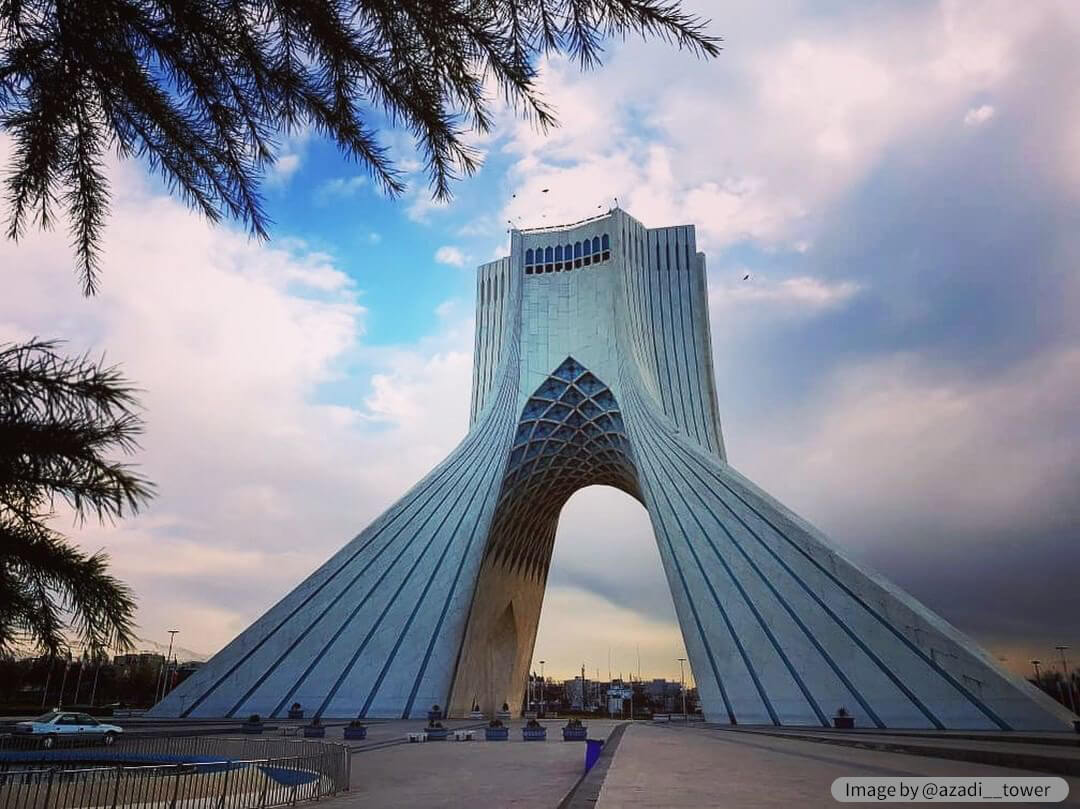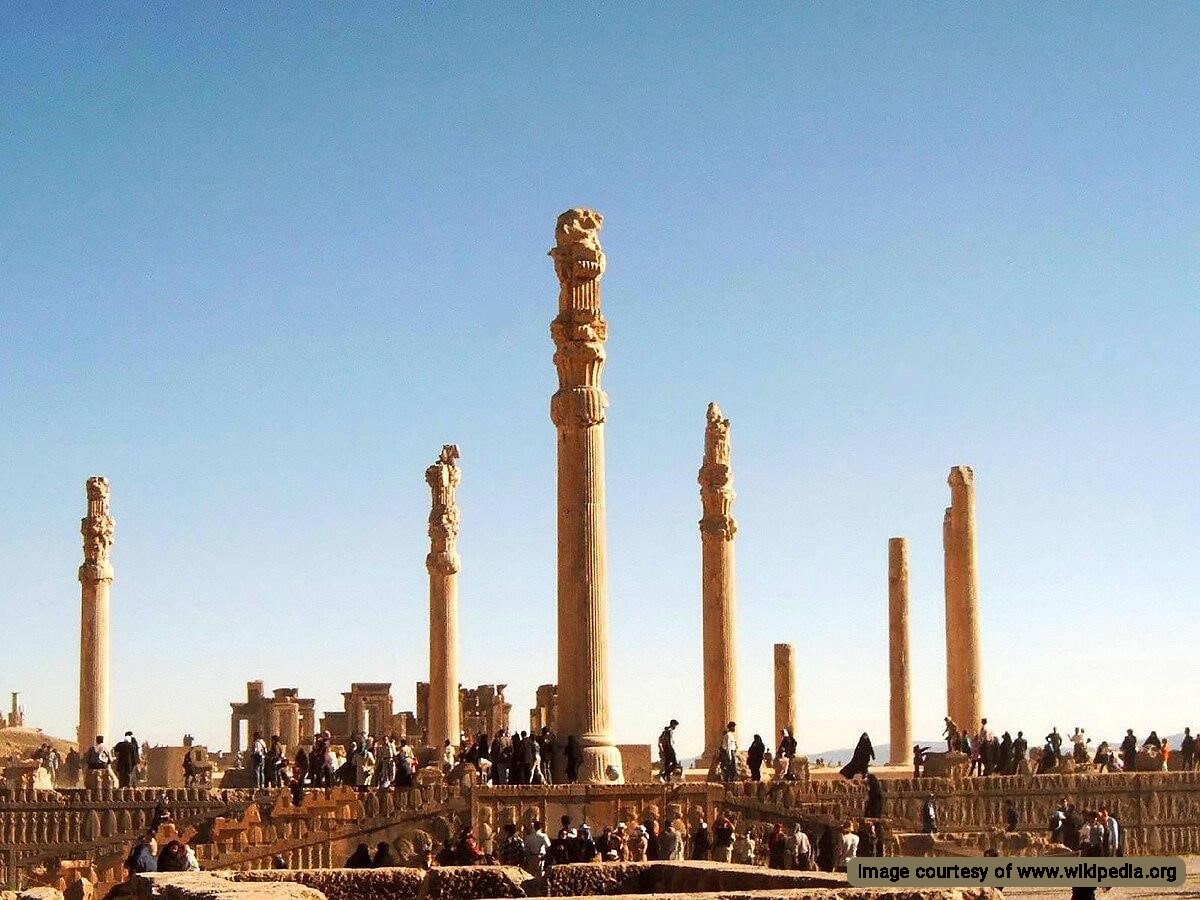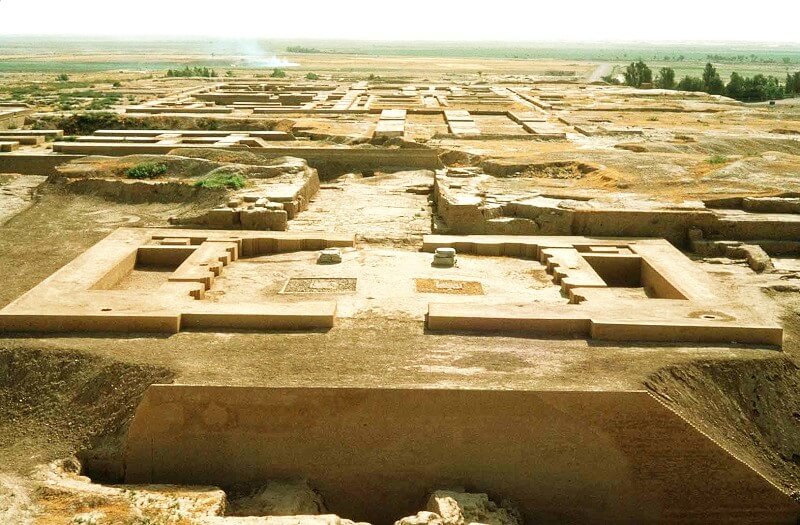
Shush or the Ancient City of Susa is one of the earliest human settlements in the world. This city is more than 6,000 years old and has been registered among Iranian attractions on the UNESCO World Heritage List. According to historical documents, Susa was one of the main Iranian cities famous for its splendor. The remains of a 7,000-year-old village were discovered in the vicinity of this ancient settlement, which is one of the Shush tourist attractions.
Shahr-i Sukhta is another Iranian historical site that is comparable to the ancient city of Susa. The Burnt City is 6,000 years old and is the birthplace of Zurvanism (Zurvanite Zoroastrianism). In the Bronze Age, trade exchanges were carried out between Shahr-i Sukhta and the ancient city of Jiroft. Some sources believe that the Jiroft civilization (with the old name of Aratta) was the origin of Elamite migration to Susa.
There are traces of several different civilizations in the ancient city of Susa: Elamite, Achaemenid, Greek (Seleucid), Parthian, and Sassanid periods and after Islam.
Archeological Excavations in the Ancient City of Susa
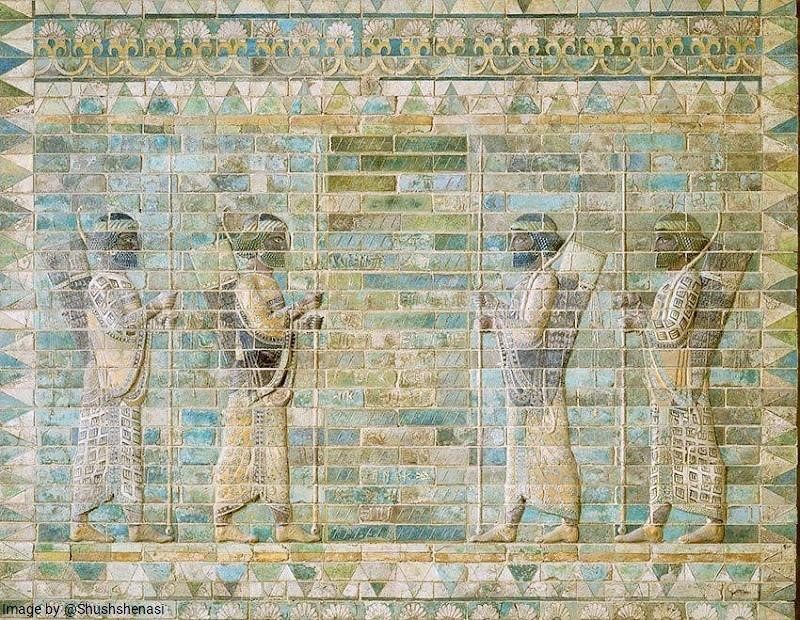
For the first time in the early 12th century AD, Benjamin Ben Janah, a Jewish rabbi, identified the city of Susa. Later, in 1850, William Kennett Loftus, a British geologist and archeologist set up an excavation in this area for the first time. The French professor, Romain Grishman, explored this area more than any other archaeologists and divided Susa into 15 ancient layers.
Between the years 1884 and 1886, Marcel-Auguste Dieulafoy conducted excavations in the area and discovered remains of Achaemenid and Sassanid buildings. After that, seasonal explorations were carried out in this area and the unearthed objects were transferred to France.
In 1891, Jacques de Morgan, along with a delegation of French archaeologists, explored and speculated in the ancient city of Susa with the official permission of the Iranian government. He divided the Susa historical site into four parts:
- The great hill of the Acropolis: the ancient central city
- Apadana hill: palaces and royal city
- A hill from a city in the south of the complex
- A hill of a common town with regular houses
Shush Castle or De Morgan’s Pillar is a castle built by Jacques DeMorgan for the residence of French archaeologists near the Tomb of Daniel in Shush, on the Acropolis historical hill. Among the most important works obtained from these hills, we can mention the famous statue of Queen Napir-Asu, the famous pea-colored Susa pottery jar with the figure of a mountain goat, and the Code of Hammurabi.
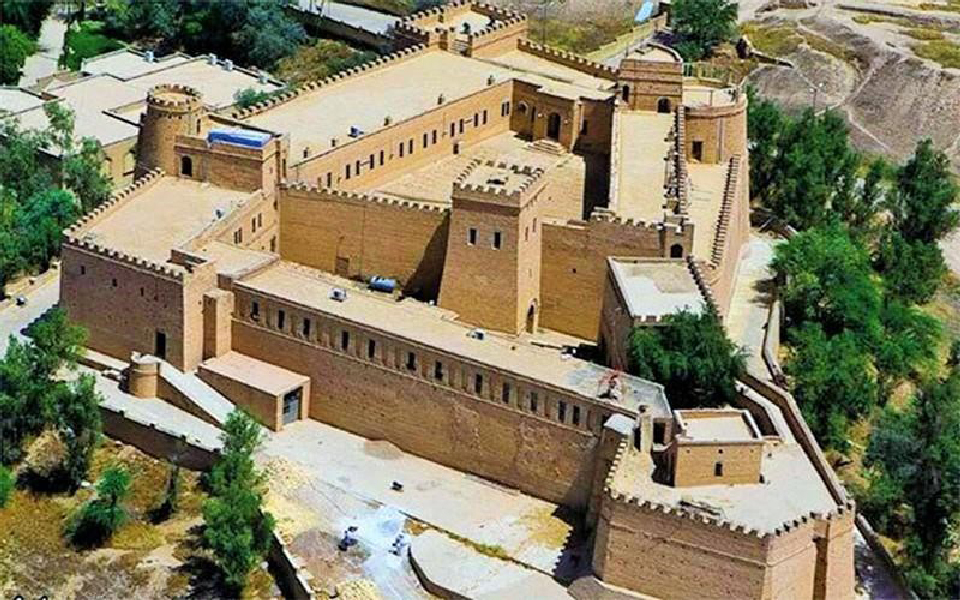
De Morgan built the castle with a medieval design under the supervision of Mustafa Dezfuli. The construction workers for the castle were Iranians. The bricks used in the construction of the building were obtained from the ruins of Apadana Palace and Tchogha Zanbil Ziggurat. The bricks of Chogha Zanbil Hill had cuneiform inscriptions. Later, the Iranian government demanded documents related to the construction of this castle, and in 1374, the French government delivered these documents to Iran.
Early Human Settlements in the Ancient City of Susa
In the middle of the 5th millennium BC or the Copper Age, there were more than 100 villages in the plain of Khuzestan, Southwest of modern Iran. One of the older examples among these settlements was “Chogha Mish” from 6800 BCE or the Chalcolithic age. These villages were formed by the settlement of nomadic tribes and their engagement in agriculture and pottery.
The formation of the ancient city of Susa began in a nearby village with an area of approximately ten hectares near Shavur. At first, its population was more than 2000 people. This city was located on the edge of the plain, But very soon it became the religious center of the region. The architecture used in this area was different from the Sumerian style. It featured the characteristics of Elamite architecture.
The early inhabitants chose a large platform as the center of the village. Near this platform is a cemetery with approximately 2000 graves. Each of the graves in this cemetery contains engraved pottery made of clay or natural bitumen, several axes, and a copper mirror.
Susa, the Elamite Capital
The expansion of the ancient city of Susa has been attributed to the Elamite civilization more than any other period. In the language of the people of Mesopotamia, the word Elam means “mountain people”. It is believed that the reason for this name is that its inhabitants lived in the mountains before migrating to this area. This city was their capital for almost 2000 years.
From 3500 to 2500 BCE, the influence of the Sumerian culture on the ancient city of Susa can be seen through the implementation of the potter’s wheel and changes in the architecture of this region. During this period, the population grew and trade expanded. This was the advent of accounting and writing. Another feature of this period was the use of flat cylindrical seals to identify the holders.
Among the ancient works of the city of Susa during the Elamite period, the statues of the gods have a special place. An example of these statues is kept in the Louvre Museum in Paris. This artifact is made of gold. The Elamites used natural elements such as bitumen, glass, and metals in construction.
Tchogha Zanbil Ziggurat and the artifacts discovered in it display the peak of Elamite culture and civilization. Untash Napirisha, the Elamite king, built this temple during the 13th century BCE to worship the gods. The five-story ziggurat was originally dedicated to these two Elamite gods: “Napirisha” and “Inshushinak”. They believed that the guardian deity of their capital ascended to the sky from that point.
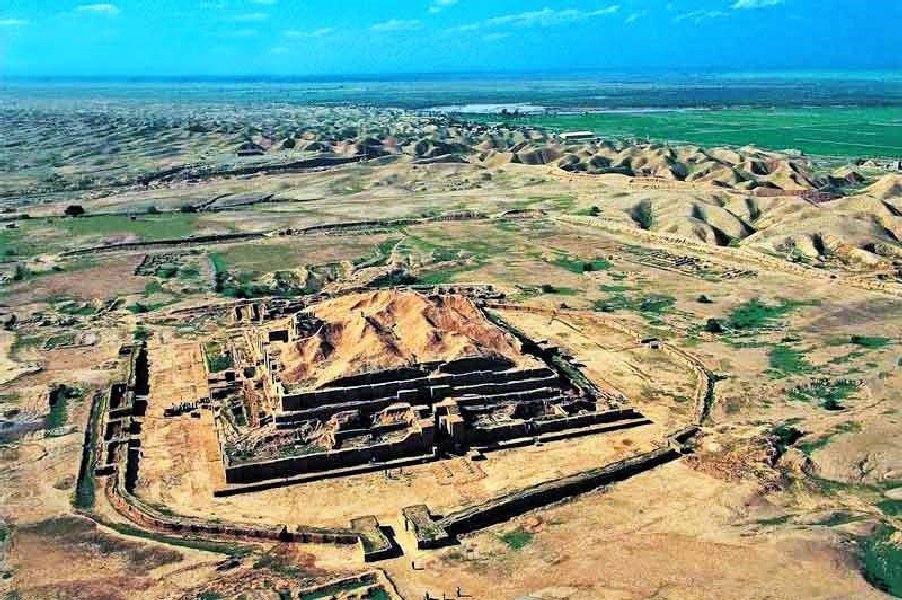
This structure is located in the center of a city called “Untash Napirisha”, which is named after the late king and the founder of the city. One of the wonders of this architectural masterpiece is the water treatment and transport systems. They used to transport water from the Karkheh River, 45 kilometers from this building.
During this period, many art forms prospered. The skills of metalsmiths led to the creation of amazing gold and silver sculptures. The brickwork decoration of this period shows certain aspects of the art of Middle Elam, which was inspired by Babylon art. The graves of this period are built with arched roofs.
In 640 AD, Ashurbanipal, the Assyrian ruler, invaded and captured Susa. Thus, the Elamite government was destroyed and Susa fell into silence until the Achaemenid rose to power.
In the middle of the third millennium BC, the Mesopotamian culture conquered the Elamite culture and Susa became a Sumerian city. As a result, the princes of Anshan and other nobles united and created a new dynasty.
The Fall of the Ancient City of Susa
Undoubtedly, the third period of the Elamite rule (Middle Elam) is the most glorious period of ancient Susa. Shutruk-Nakhunte (the founder of the Shutrukid dynasty), greatly expanded the boundaries of his territory. He built several historical monuments. During this period, old traditions were revived and were welcomed by the people. Five kings continued this dynasty for 70 years.
With the decline of the Shutrukid dynasty, peace and tranquility disappeared and the people were forced to return to their nomadic lifestyle. Therefore, the history of Susa until the 8th century BCE is somewhat unknown.
In 645 BCE, Ashurbanipal asked the Elamites to send the idol of their god Nana to Assyria because he was not satisfied with the results of previous battles and was looking for an excuse to wage war. Since the king of Elam knew that accepting this demand would mean the end of his life, he decided to resist his request. As a result, the Assyrians attacked the ancient city of Susa with all their destructive might.
In the 8th century BCE, the Medes rose to power in the Iranian plateau and helped revive Iranian culture, combining it with the culture of the Elamites and other local communities.
At the end of the century, the Medes helped revive the kingdom of Susa and Anshan and with their support, ushered in a new era called “New Elam”. They fought several battles with the kings of Mesopotamia and won against them.
Susa During the Achaemenid Period
Since the Achaemenid kings were from Anshan heritage, they had a good relationship with the Elamites. Therefore, they helped rebuild the ancient city of Susa. During the time of Darius the Great, Susa was declared the winter capital and administrative and commercial center of the Achaemenids due to its mild weather and proximity to Mesopotamia. Apadana Palace, Acropolis, and Royal City are some of the historical monuments left from this period. The Achaemenid kings built magnificent palaces in Susa where they welcomed the political ambassadors of the nations.
Apadana Palace of Susa was the winter palace of Achaemenid kings and the main palace of Darius the Great. This palace was built by the order of Darius the Great, around the years 521 to 515 BCE in Susa over Elamite land.
Darius the Great says in an inscription in Susa: “I built the magnificent palace of Susa with the help of Ahuramazda.”
There are no remains of the palace that Darius the Great built, and what we know today as the remains of Apadana Palace belong to the period of Artaxerxes II. The columns and capitals are similar to Persepolis. The capitals are sculptures of human and animal hybrids. The floor of the halls is covered with large stones.
Apadana Palace, like other Achaemenid palaces, was destroyed by Alexander’s invasion of Persia.
Susa During the Seleucid and Parthian Periods
During the rule of the Seleucids and Parthians, the ancient city of Susa lost its political importance, but it remained an independent commercial center. At this time, trade relations with India and Saudi Arabia and the sale of spices and other goods were common in the markets of Susa. This prosperity continued in the Parthian period. Coins from the Seleucid and Parthian periods have been found in Susa.
By the end of the 4th century BCE, Susa had transformed into a fully Greek city, and its name was changed. During this period, part of the Achaemenid royal city was rebuilt and the Achaemenid palaces were once again inhabited.
Hellenistic art left a great impact during this period. Some of these effects were seen in social buildings, sports centers, and even places of worship of Greek gods in this city. During the Parthian rule, local production was resumed and the large houses were redesigned with an Iranian style. At the end of the Parthian period, large pottery workshops were built in the city.
Susa in the Sassanid Period
During this period, Shush, along with Gundeshapur and Shushtar, was considered the main commercial center in Iran, especially in the production and export of silk. During the reign of Shapur II in the 4th century AD, a rebellion broke out in the city of Shush, which was suppressed by the king. As a result of the conflict, the city was destroyed. Shapur ordered the city to be rebuilt and named the new city “Iran Khore Shapur” which means “the glory of Iran by the hands of Shapur”.
At that time, many Christians lived in Susa. Since Christianity was known as the religion of the enemy (Romans), around 350 AD, Shapur II built another city called “Iwan Karkheh” in the northwest of Susa.
To replace this city with the rebel city of Shush, he established several textile workshops there. However, the ancient city of Susa was revived in the 6th and 7th centuries due to its location on the silk road and soon became known as one of the main producers and exporters of silk.
Susa in the Post-Islam Era
According to the books “Fath al-Futuh” and History of the Prophets and Kings by Muhammad ibn Jarir al-Tabar, seventeen years after the migration of the Holy Prophet (PBUH) from Mecca to Medina, Arab invaders massacred more than 30,000 people in the ancient city of Susa. In the Middle Ages, this city was the capital of Khuzestan. A fortress protected Susa from foreign threats. This city had large markets and a mosque with two cylindrical columns.
Before the Mongol invasion and the selection of Ahvaz as the new capital of Khuzestan province, this city had a large population. Susa was still famous for raw silk fabrics, sugarcane, pomegranates, and citrus fruits. After the invasion, Susa became a pilgrimage city for Jews and Muslims due to the presence of the Tomb of Daniel.
Shush City in Modern Iran
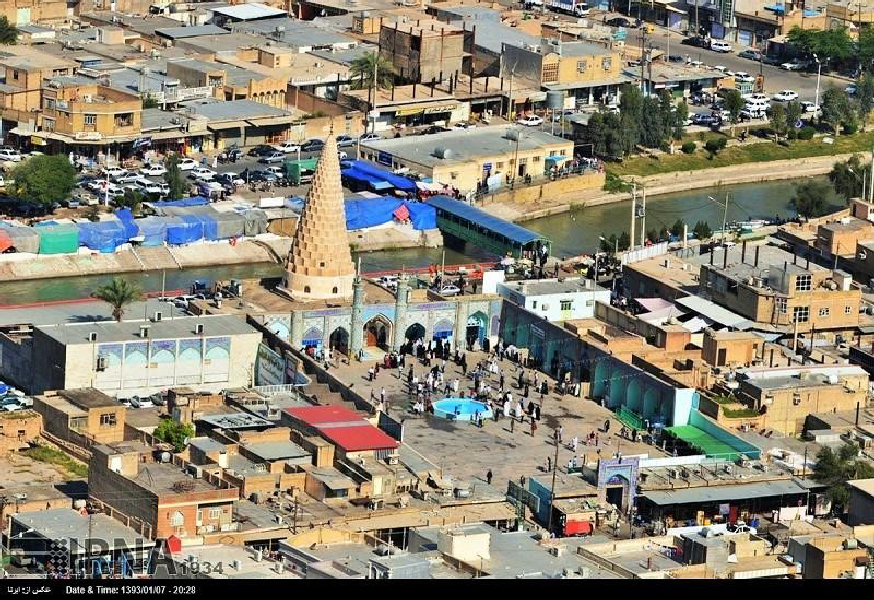
Susa or Shush in Persian has seen many ups and downs, But the people of this region of Khuzestan province still live near this ancient human settlement. Today, Sush has attracted a large population due to the presence of the railway, Dez Dam, modern irrigation systems, and large agricultural and industrial companies. Of course, most of the residents are engaged in the service industry and trade.
The modern city of Shush attracts thousands of visitors from inside and outside of Iran due to the existence of the ancient city of Susa, Tchogha Zanbil Ziggurat, Tomb of Daniel, and also its location on the Ahvaz road (the current capital of Khuzestan province). This growing interest has made tourism investors take practical measures to promote it as one of the Khuzestan tourist attractions. Therefore, we should soon expect the growth of accommodation facilities in Shush.
Where is the Ancient City of Susa in Iran?
Shush City, near the ancient city of Susa, is located on the road from Andimeshk to Ahvaz in Khuzestan province. The distance between Shush and Andimeshk is about 40 km and Ahvaz is about 110 km. To visit the ancient city of Susa, just use the following location:
Frequently Asked Questions About the Ancient City of Susa
If you did not find the answer to your question here, leave us a comment in the comments section at the end of this post and ask your question. We will answer it as soon as possible.
How old is the ancient city of Susa?
Historians consider the ancient city of Susa to be one of the oldest human settlements. This area dates back to 4200 years BCE.
What products were traded in ancient Susa?
The obtained evidence shows that Susa was a place for trade at the height of its prosperity. The most important products of this region are raw silk textiles, bergamot orange, pomegranate, and sugarcane.
Why are many of Susa’s historical artifacts in the Louvre Museum in France?
The French realized the importance of this historical site for the first time. They started digging in this area under a contract with the Qajar government of Iran. Many artifacts were illegally transported to France during these excavations, which are now exhibited in the Louvre Museum of France.
What is the reason for the global fame of the ancient city of Susa?
One of the most important attractions that have made Susa world famous is “Chogha Zanbil Temple”. Tchogha Zanbil Ziggurat is an ancient place of worship that is famous in the world. So many tourists travel to Sush just to see this UNESCO World Heritage site.
Is “Susa Castle” an ancient artifact?
Susa Castle was built by Jacques De Morgan, with the purpose of housing French archaeologists in the Qajar period. This castle is located near the tomb of Daniel. Unfortunately, in the construction of this castle, bricks left over from Dariush’s palace and bricks with cuneiform inscriptions were used. The castle has medieval architecture.









